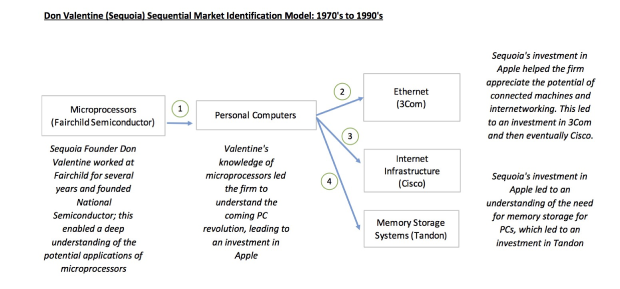Determining Market Size When Evaluating Innovation
To be a great early-stage venture capital investor, a VC must identify new massive market opportunities that will produce the next wave of great startups before everyone else.

Understanding market potential and sizing is at the core of any founder or investor wanting to transform society. To be a great early-stage venture capital investor, a VC must identify new massive market opportunities that will produce the next wave of great startups before everyone else. And then select the foremost company out of the several startups that may be playing in a new market. Furthermore, large markets are non-obvious in the beginning. Just ask the investors who passed on Airbnb because they believed no one would want to stay in a stranger’s home, or those who passed on Snap because they thought it was just a sexting app.
There are numerous approaches to market sizing and execution - right from Peter Thiel's framework of picking a niche that can be monopolized to Keith Rabois' belief that all customers can be broadly targeted at first simultaneously. There are also multiple ways of technically sizing the market - whether it be Total Addressable Market (TAM), Serviceable Available Market (SAM), Serviceable Obtainable Market (SOM), or taking a bottoms-up or top-down approach. But interestingly, the one factor that remains a constant across these frameworks and approaches is the question 'why now?'.
Essentially, timing combined with the direction of market growth is often more important than current market size itself.
Essentially, timing combined with the direction of market growth is often more important than current market size itself. Whilst large markets optically demonstrate a big opportunity, they also entail competition and major difficulties with differentiation. On the other hand, small markets that grow concentrically can expand and become a large and compelling opportunity over time. Klarna, which started by enabling online payments and now is offering broad payment solutions or an alternative to credit cards, is one company that revolutionised an industry. Ultimately, they can provide credit instantly, which is an order of magnitude improvement on credit cards.
This shows us that the ancient retort of 'market is too small' might be a fallacy as what’s more important is envisioning different market forces and how a company can actually evolve the market, or secondary markets around it. At the center of this lies the determinant of timing. As a venture capitalist you cannot be too early or too late. In order to gain a competitive advantage, the goal should be to get there early enough so that no one else can understand the underlying market dynamics. You don’t want to be so early, however, that there is a mismatch between market availability and market demand, which leads to burning cash to create a market that people do not want to purchase in. Simultaneously, you must be late enough that market forces, technological provisions and user behavior are all gradually signaling for a particular market opportunity, but not too late that the market is crowded and differentiation is tested.

One framework that demonstrates this well is Don Valentine's Sequential Identification Model. Through this approach, Valentine leverages domain expertise to identify and understand a large new market and then applies a first-principles-led logical approach to spot subsequent large markets that could evolve as a function of the first market. By looking at market needs and analyzing supply needs and demand consequences of the initial market, Valentine can map out novel market opportunities sequentially.
Lastly, history has shown us repeatedly that investing cycles (especially consumer) and market opportunities correlate with technological innovation, generational differences and historical events. Events like the Dotcom Bust, Global Financial Crisis and SARS epidemic all gave rise to new market opportunities and business models, which were further accentuated by novel technologies like the smartphone, VR and voice apps. That said, with technological innovation rates ramping up, Gen Z and now Gen alpha redefining the consumer landscape - and COVID-19 changing consumer patterns - there are compelling new market opportunities ripe from a timing perspective.
🌗 🔥
This post was co-authored by Mattias Ljungman and Akshat Goenka.

